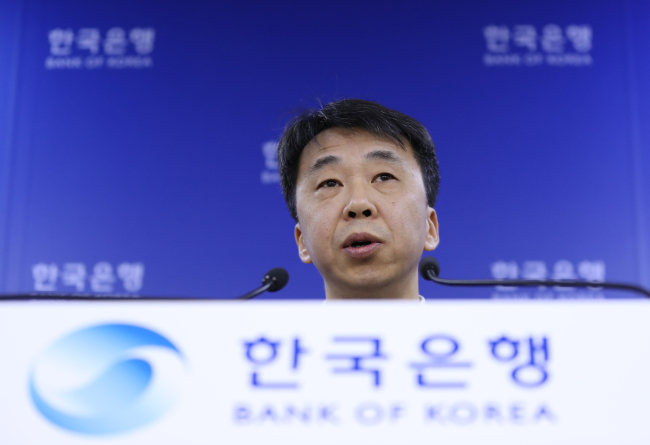South Korea’s economy grew 2.7 percent in 2018, marking a six-year low amid sluggish investments, but its per capita income exceeded the $30,000 mark for the first time, central bank data showed Tuesday.
The latest figures are considered crucial for Asia’s fourth-largest economy amid the prolonged slow economic growth, as the $30,000 mark is generally considered an entry line for top-tier economies.
According to the revised estimates released by the Bank of Korea, the country’s gross national income per capita stood at $31,349 last year, up 5.4 percent on-year.
It has taken South Korea 12 years to raise its per capita GNI from $20,000 to the $30,000 mark, a period longer than the average of other developed countries due to the 2008-20009 global financial crisis. Japan and Germany spent five years in the $20,000-$30,000 bottleneck, while the United States and Australia spent nine years, data showed.
Based on data by the World Bank as of 2017, South Korea ranked ninth in per capita GNI among countries with 20 million or more people, standing next to the US, Japan, Britain, France, Germany, Canada, Austria and Italy.
 |
Shin Seung-cheol, director of the national accounts division at the Bank of Korea, speaks in a press briefing. (Yonhap) |
“The $30,000 milestone in per capita GNI is considered an indicator for being bracketed as an advanced nation,” said Shin Seung-cheol, director of the national accounts division at the BOK, underlining the country’s remarkable growth over the past decades since the Korean War.
Should South Korea continue to grow at the current pace, it may take about 10 years to join the club of $40,000 per capita GNI, the official noted.
Private institutions such as the Hyundai Research Institute predicted that it will likely be achieved by 2027.
But concerns persist on economic growth pace, which was the slowest on-year gain since 2012, when the country pulled off an annual growth of 2.3 percent.
Also, one percentage point of the 2.7 percent total annual growth was achieved during the fourth quarter, backed by government spending.
In nominal terms, gross domestic product growth hit a 20-year low of 3 percent, reaching $1.62 trillion last year.
Facility investments fell to a nine-year low of 1.6 percent, amid slowing demand for semiconductors. Construction investment also slipped 4 percent, the steepest pace since the Asian financial crisis in 1997, as a result of the government’s continued efforts to cool the local real estate market.
Private spending rose 2.8 percent, the highest in seven years, while government spending soared to an 11-year high of 5.6 percent, reflecting its efforts to pump-prime the economy.
By Bae Hyun-jung (
tellme@heraldcorp.com)








